Light Sources and Separate Control Gears – Applicability of Regulations (EU) 2019/2020 and 2019/2015 to CAPIEL Products
The target audience for this guide is manufacturers of CAPIEL products. It should be read in conjunction with Commission Regulation (EU) 2019/2020 “Ecodesign requirements for light sources and separate control gears”, Commission Delegated Regulation (EU) 2019/2015 “Energy labelling of light sources” and any associated amendments and corrigenda.
Applicability of the Radio Equipment Directive (RED) 2014/53/EU to CAPIEL Products
The target audience for this guide is manufacturers of CAPIEL products, and it is assumed that the reader is already familiar with both the Radio Equipment Directive (RED) and the European Commission’s "Blue Guide". This guide is not intended to conflict with either the RED or the European Commission’s Blue Guide, and the reader should be aware that the relevant national transposition of the directive is legally binding. If in doubt, the supplier of the equipment must seek his own advice on any issues and must not rely on this document alone.
Ecodesign for Electric Motor Control Solutions: Towards a System Approach
The EU’s Ecodesign Directive is an effective legislative tool which seeks to minimise the environmental impact of a wide range of products; in order to pass on a greener planet to the next generation.
WEEE2 Scope (Updated!)
The purpose of this CAPIEL paper is to help manufacturers to determine whether their products are or not ‘EEE’ according to the recast WEEE Directive (2012/19/EU), often known as WEEE2. Manufacturers have to analyze also when they have the role of ‘producer’ according to the Directive in order to determine when they are responsible to report for that products.
New LVD / EMC / ATEX / RoHS Directives
Although many of the horizontal issues are already addressed in the European Commission’s “Blue Guide”, questions still remain, and this document sets out CAPIEL’s understanding of the minimum recommended practices with regard to some of these frequently asked questions (FAQ’s).
Ecodesign Requirements for Electric Motors – Towards a System-Approach
This brochure aims to demonstrate the benefits of motor starters for fixed speed applications. It provides information and guidance as regards ecodesign for electric motors and related control modes to achieve most energy efficient applications.
RoHS Scope
The purpose of this CAPIEL paper is to help manufacturers to determine whether or not the products they place on the market fall within the scope of the recast RoHS Directive (2011/65/EU), often known as RoHS 2.
RoHS additional substance restrictions
Considerations for addition of restricted substances in RoHS rise concerns within CAPIEL industries.
Actually quantities of industrial EEE are used in hazardous environments, mission critical functions requiring high reliability, etc. , and must meet the stringent requirements set out in both European and International standards. This implies a large number of tests and a long compliance qualification process.
The document shows that for CAPIEL EEE, time to replace a substance and comply with any new substance restrictions can be up to up to 8½ years.
CAPIEL Position Paper on Regulation (EC) 640/2009E
As a result of discussions with CAPIEL and other industry groups, two particular concerns have arisen that may affect the success of Regulation (EC) 640/2009 with regard to “ecodesign” requirements for electric motors.
Ecodesign Requirements for Electric Motors – Towards a System-Approach
This brochure aims to demonstrate the benefits of motor starters for fixed speed applications. It provides information and guidance as regards ecodesign for electric motors and related control modes to achieve most energy efficient applications.
European Low Voltage Industry Contribution to Smart Grid
Energy efficiency challenges have thrown the spotlight on the potential of the smart grid. The Low Voltage European Industry is deally positioned to help industry, commercial buildings, and the residential sector exploit that potential. Energy efficiency is top of the agenda for countries and companies alike as they rethink the way they manage their electricity usage. Driving that reappraisal is the smart grid and its new paradigm where supply and production dynamically interact to ensure balance across the grid. The European Union, for one, is thinking ahead to the day when the Europe-wide smart grid is operational. It is already working on setting global standards for energy efficiency. As part of that effort, a group of major players from the low voltage electrical industry has come together under the name of CAPIEL to define and standardize the interface between local smart grids and nationwide public smart grids.
What about the controlgear?
EU Regulation for Ecodesign of electric motors (n°2)
The ecodesingn requirements of the EU Commission Regulation have applied since June 2011. This regulation imposes mandatory minimum efficiencies for many types of three-phase, low voltage induction motors. This second brochure provides information concerning the application of the current EU regulation to implement more efficient motors. Furthermore this brochure supports the design of motor driven applications to achieve the best energy efficiency solution.
Electric motors efficiency
CAPIEL Fully supports the goal of energy saving by using energy efficient component. However, it cannot be forgotten that the ultimate objective is to ensure the best energy efficiency of the complete system or solution. The reality of motor applications is rather complex an the directive, as written, might be misleading. Therefore CAPIEL would like to take the opportunity to highlight some part of this regulation and its related preliminary studies.
CAPIEL Code of Conduct
“To drive the business in a sustainable way”
CAPIEL is promoting this Code of Conduct to guide and support their member companies and more globally the market stakeholders towards excellence and long term value creation through the sustainable development of their customers and more globally their markets and the planet.
Corporate social responsibility, environmental care, best in class quality and highest level of service is the credo of CAPIEL industry all over the world. Member companies of CAPIEL set themselves high standards in the fields of Ethics, Environmental protection and quality. They are committed to achieving year-on-year continuous improvement in each of these areas. These goals apply to the entire value chain, from suppliers to sales.
By endorsing this Code of Conduct, CAPIEL members’ companies acknowledge their full understanding of the requirements and implications of these written criteria and commit to have a code of conduct respecting these principles as a mean to deliver the full value of their offering to customers and other stakeholders.
Download CAPIEL Code of Conduct - english
Download CAPIEL Code of Conduct - french
CAPIEL CoC Introduction - CAPIEL CoC endorsement letter
Names of companies which endorsed the CAPIEL CoC
- ABB Low Voltage Products Division
- AEG POWER SOLUTIONS SAS
- Benedict GmbH
- COET Costruzioni Elettrotecniche srl
- COMECA Group
- Eaton Industries GmbH
- Elektra Tailfingen Schaltgeräte GmbH & Co. KG
- ENERDIS S.A.S.
- Fairford Electronics Ltd
- FRAKO Kondensatoren- und Anlagenbau GmbH
- IMEQUADRI DUESTELLE SPA
- K.A. Schmersal Holding GmbH&Co. KG
- Kraus & Naimer GmbH
- Legrand
- Lenord, Bauer & Co
- LOVATO ELECTIC SPA
- Mitsubishi Electric Europe B.V.
- Owner & Ceo
- PRIMICERI SPA
- Rockwell Automation s.r.l.
- Schneider Electric Industries, SAS
- Siemens AG, divisions “Industry Automation” & “Low and Medium Voltage”
- Socomec


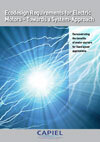 Download the leaflet (English)
Download the leaflet (English)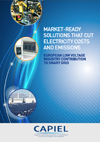 Download the leaflet (English)
Download the leaflet (English)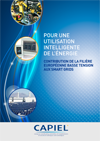 Download the leaflet (French)
Download the leaflet (French)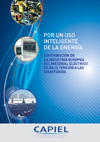 Download the leaflet (Spanish)
Download the leaflet (Spanish)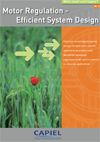 Download the leaflet (English)
Download the leaflet (English)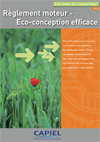 Download the leaflet (French)
Download the leaflet (French)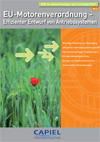 Download the leaflet (German)
Download the leaflet (German)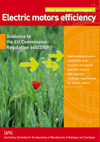 Download the leaflet (English)
Download the leaflet (English)